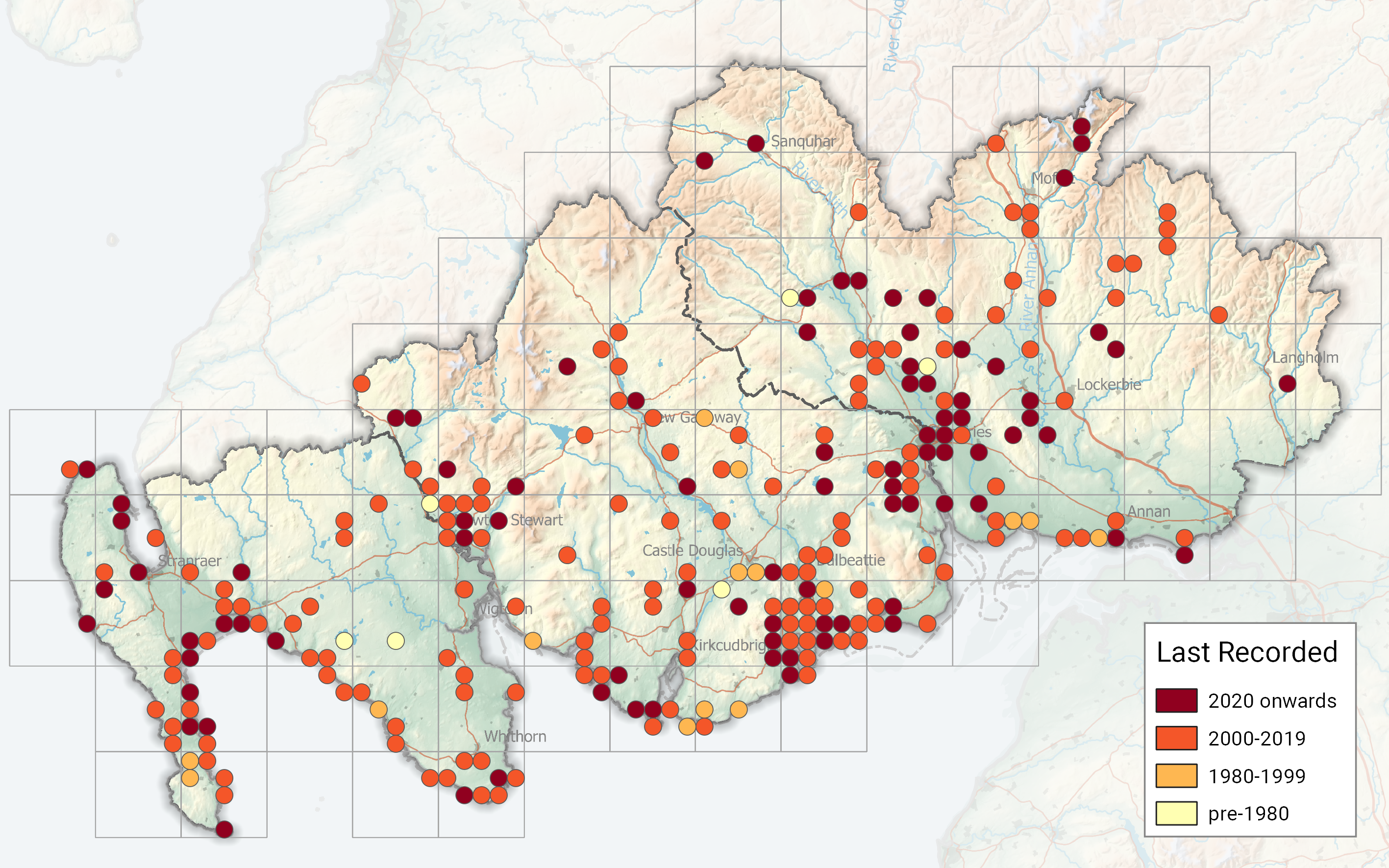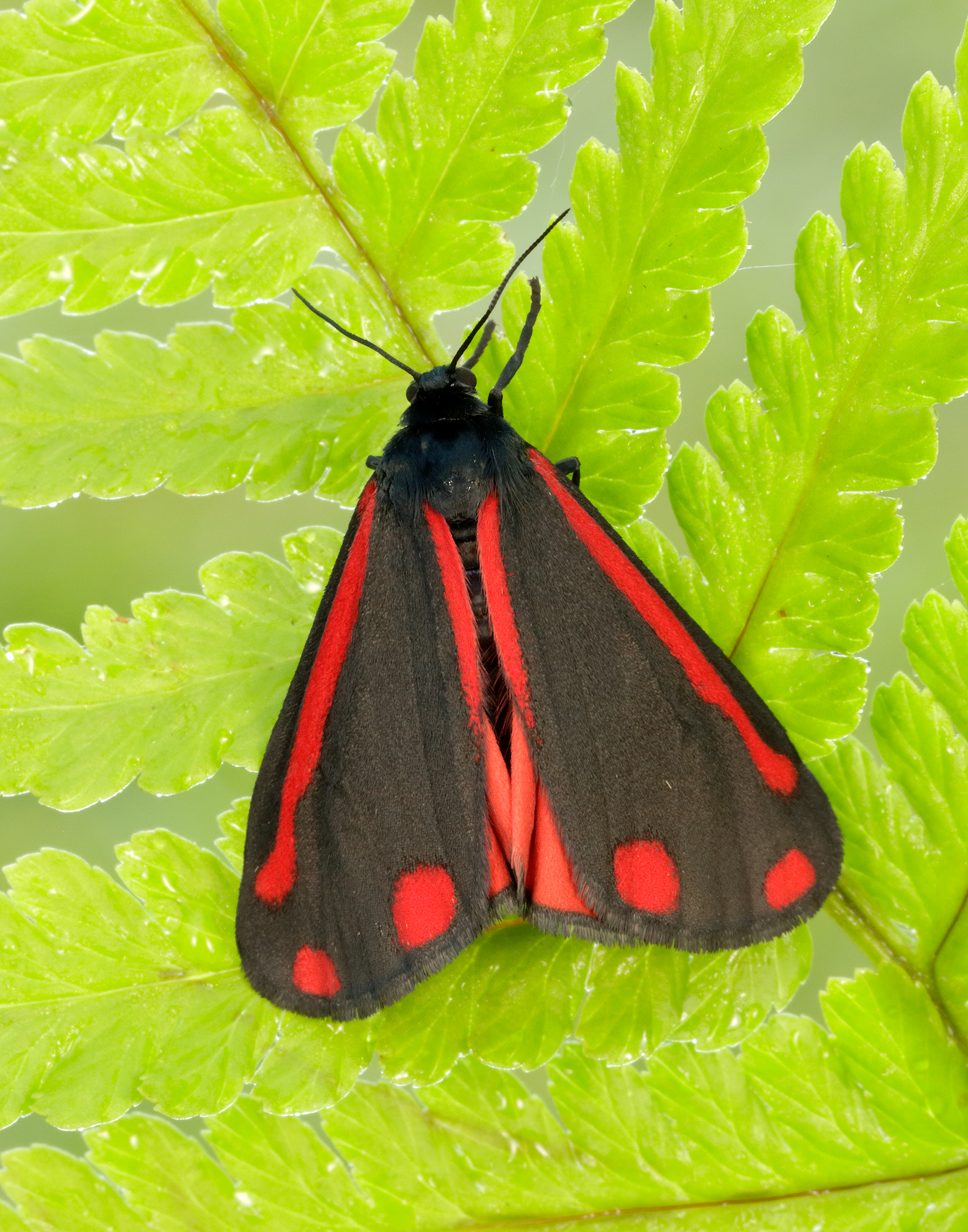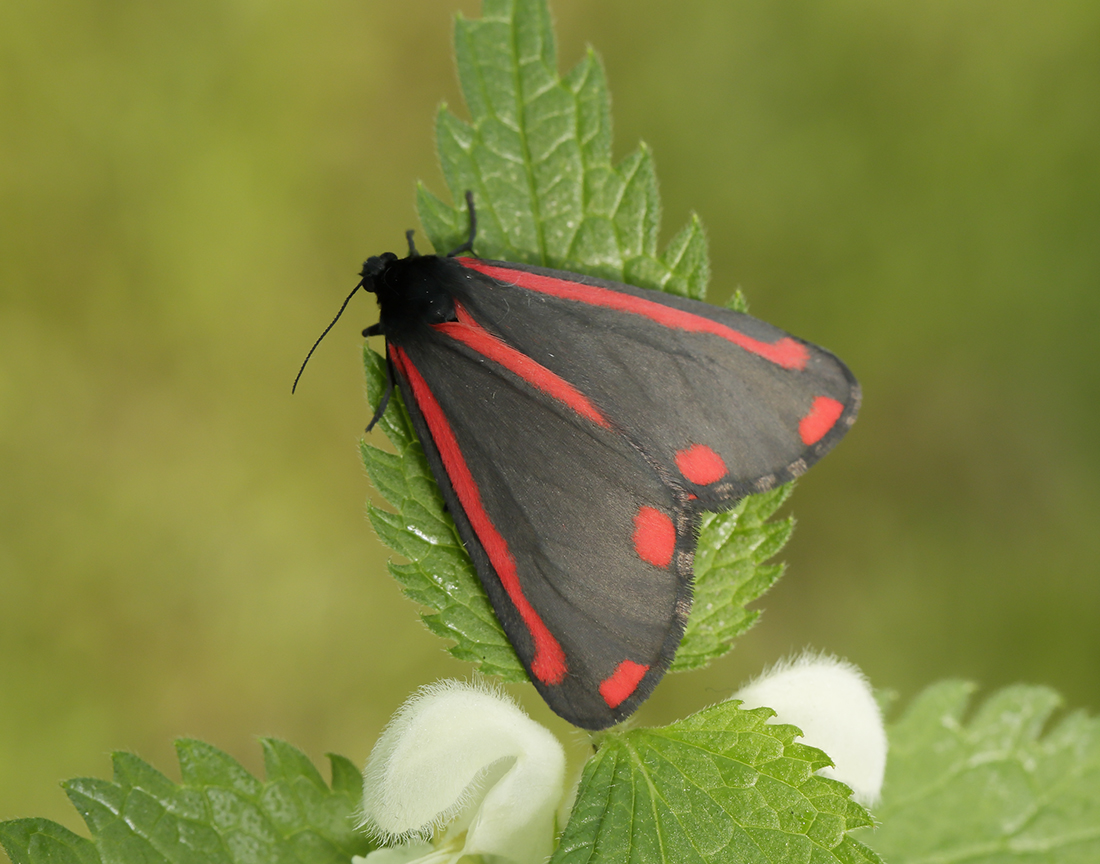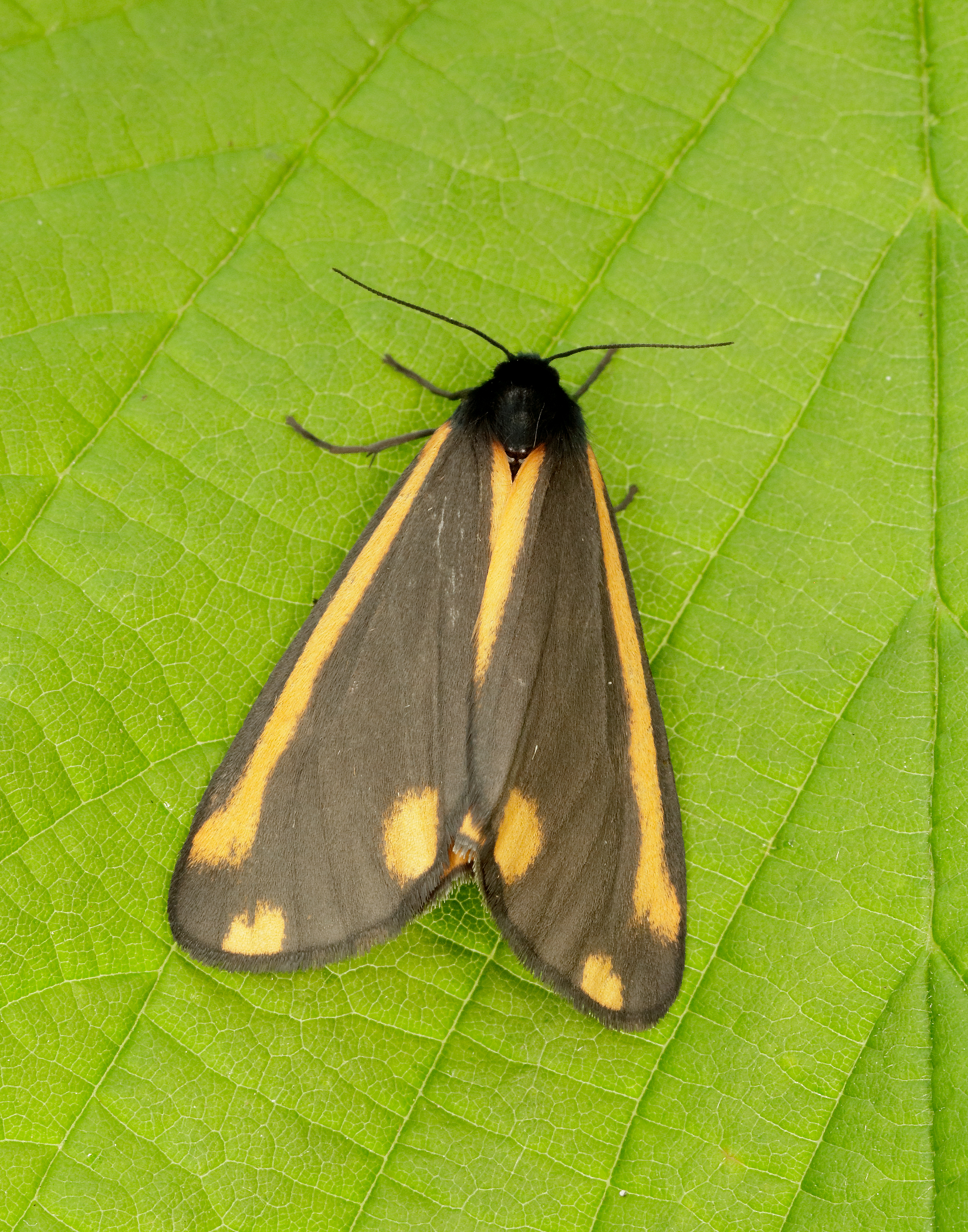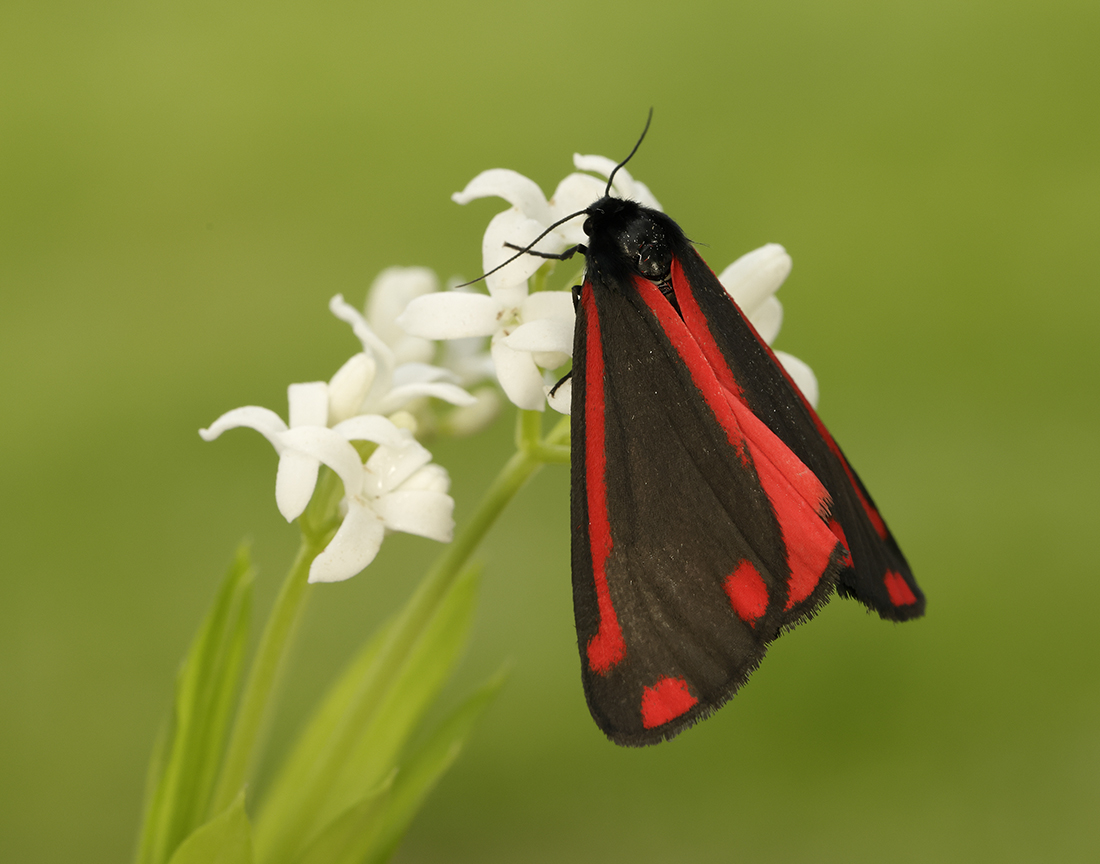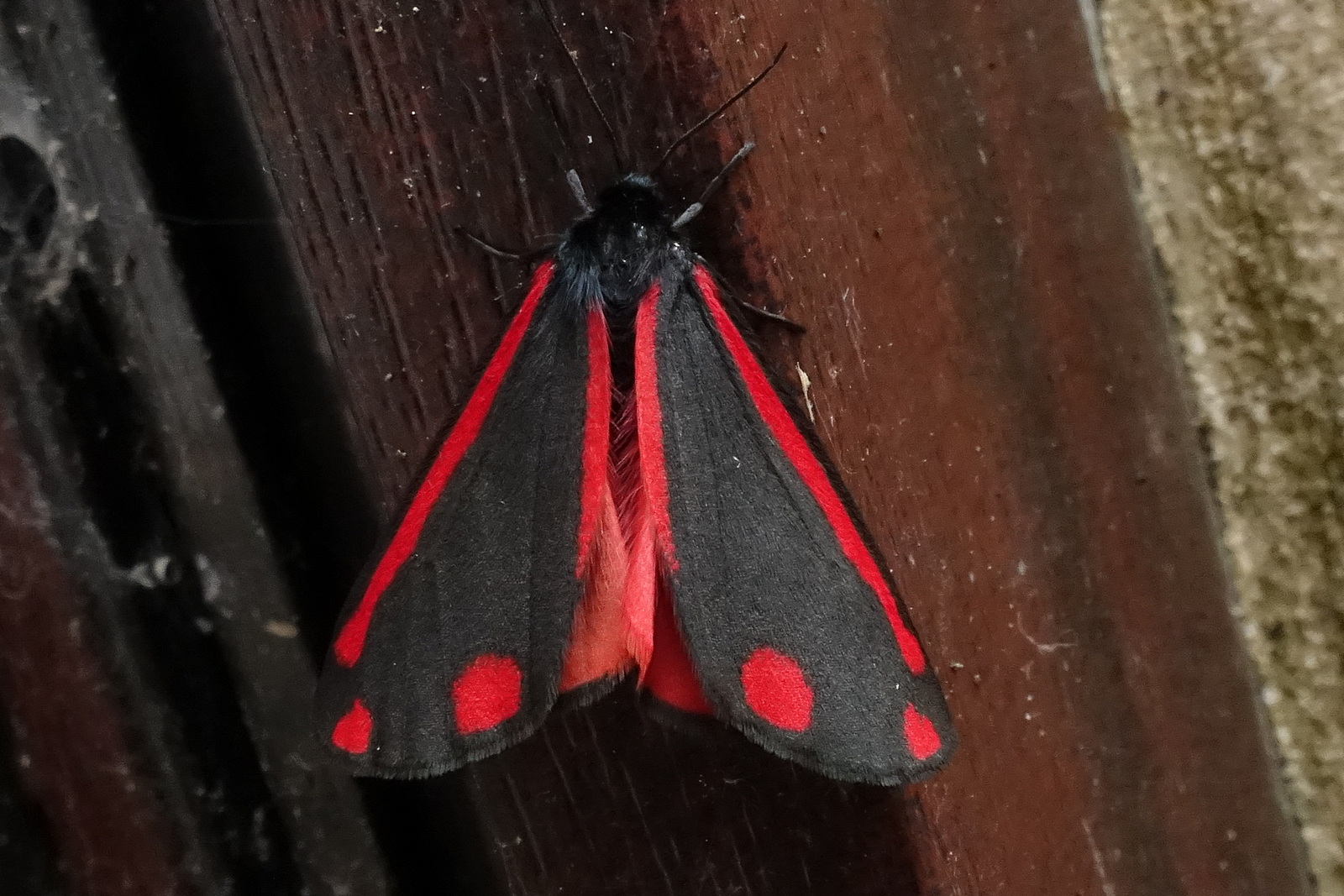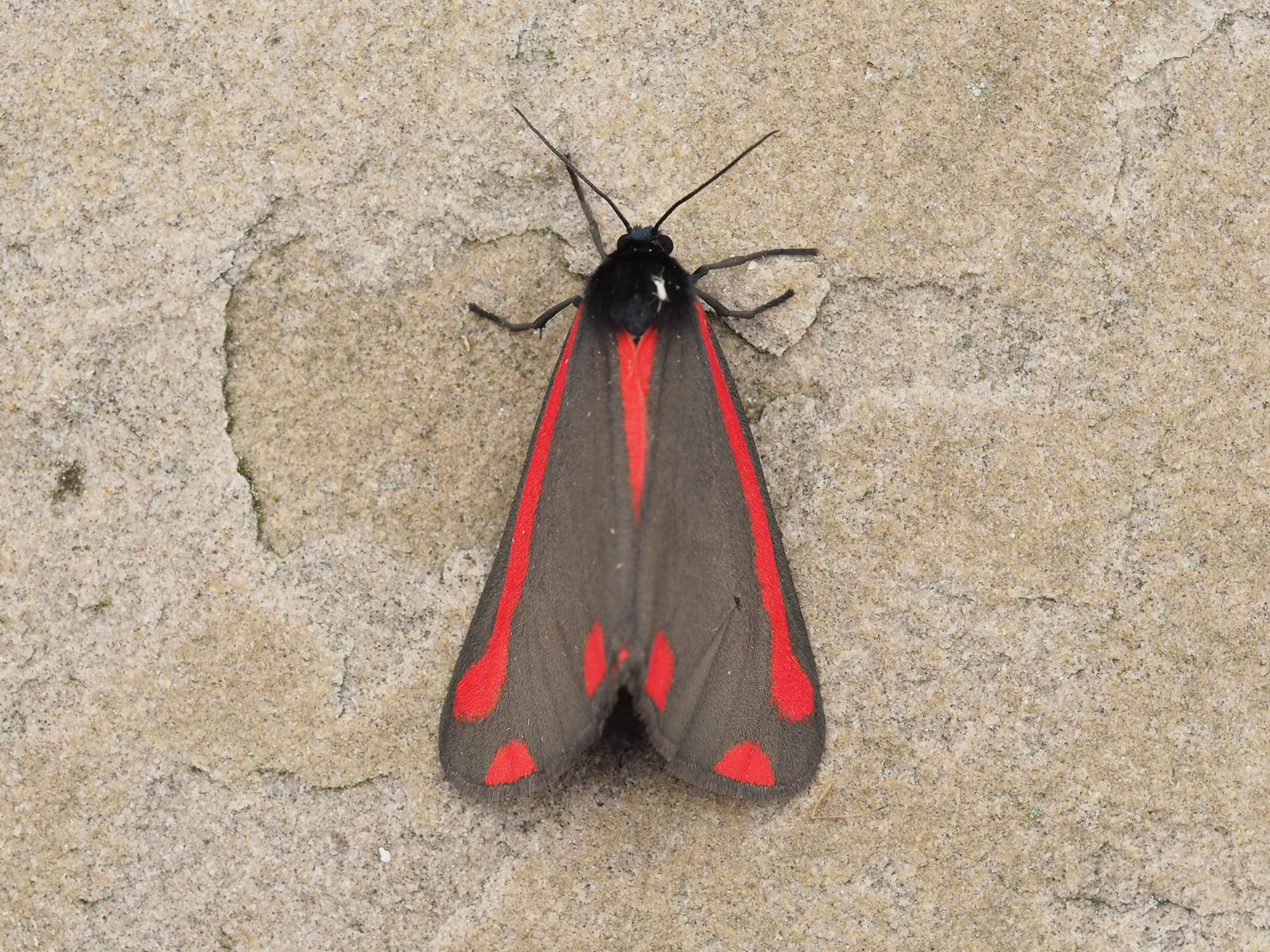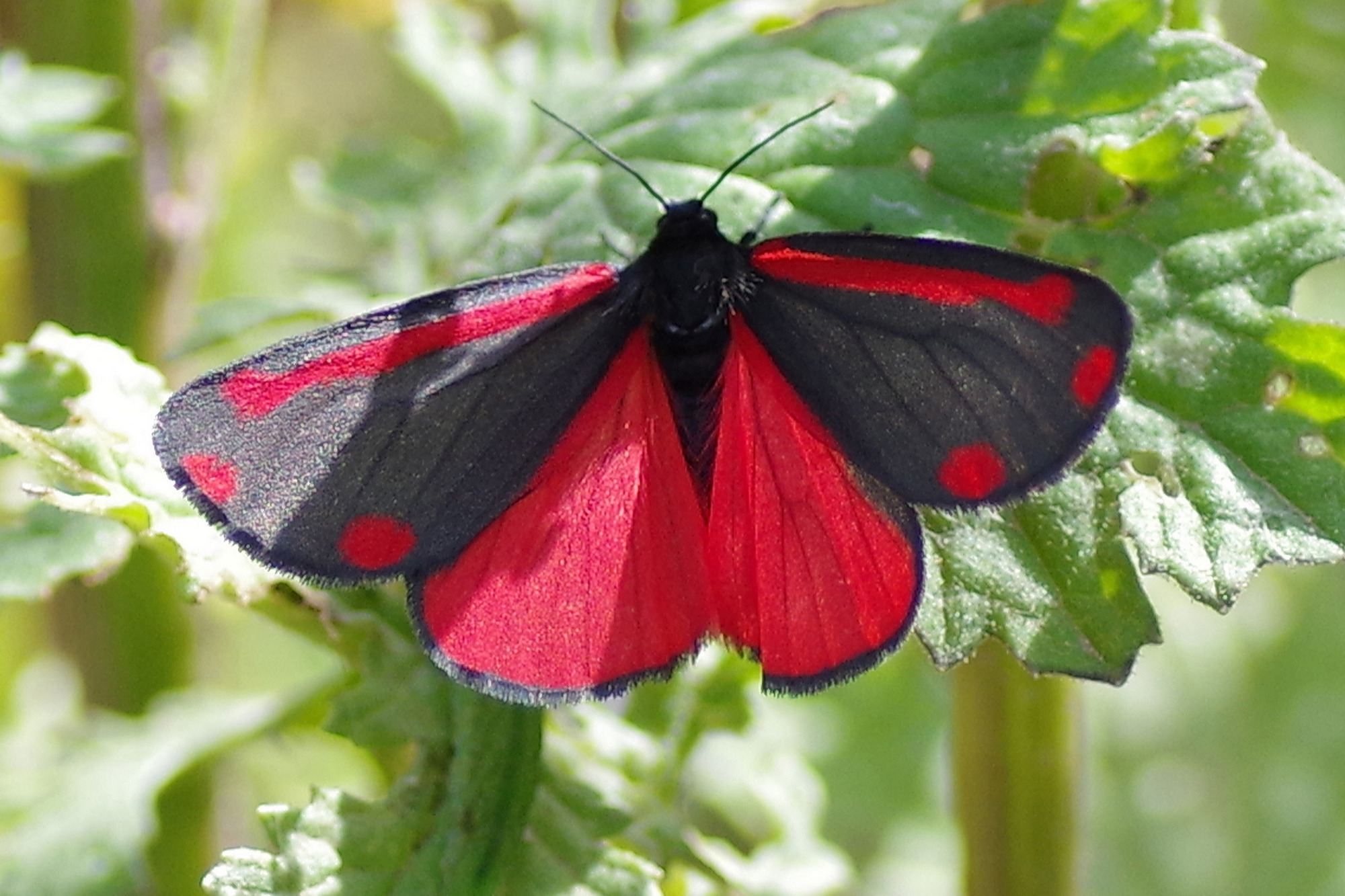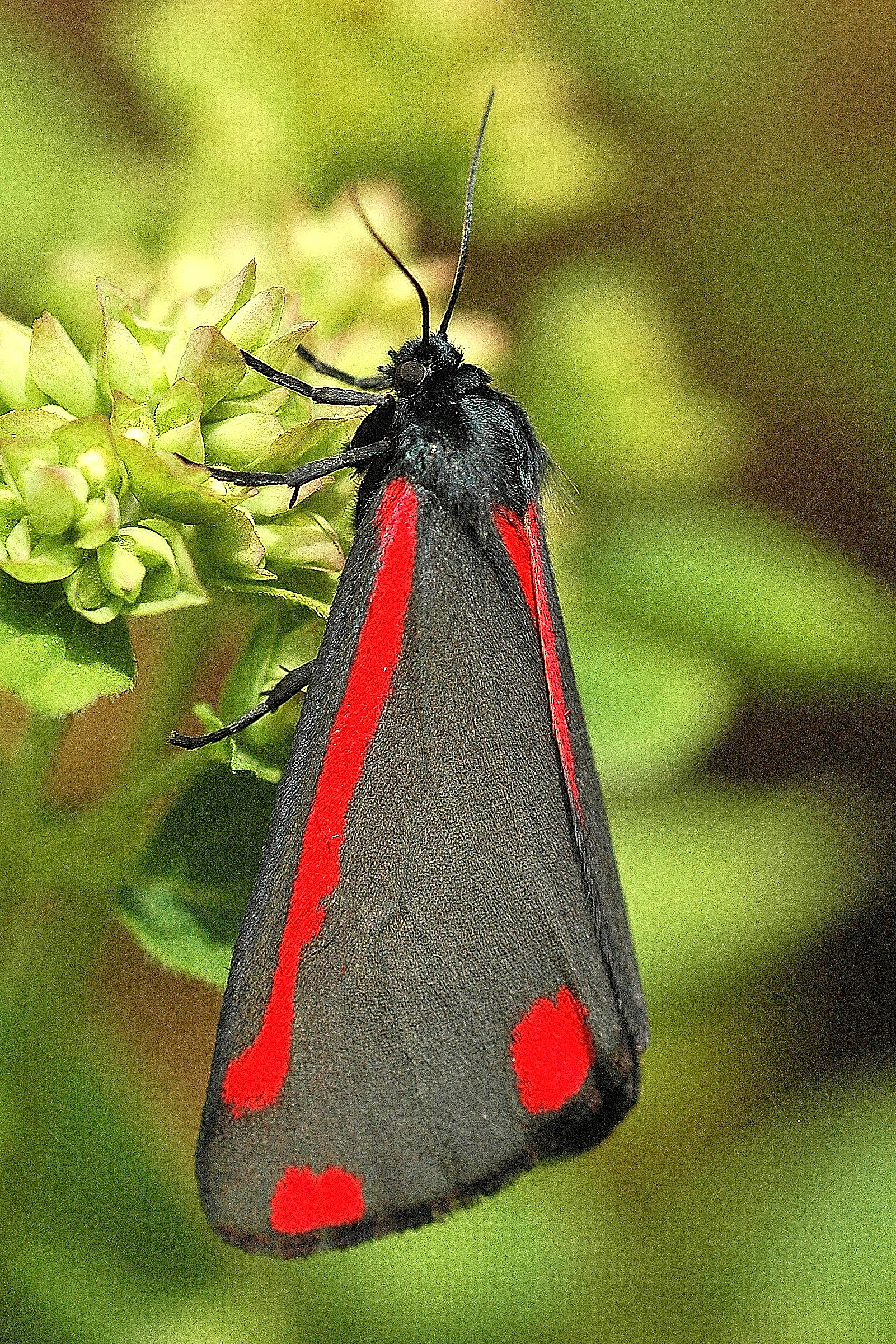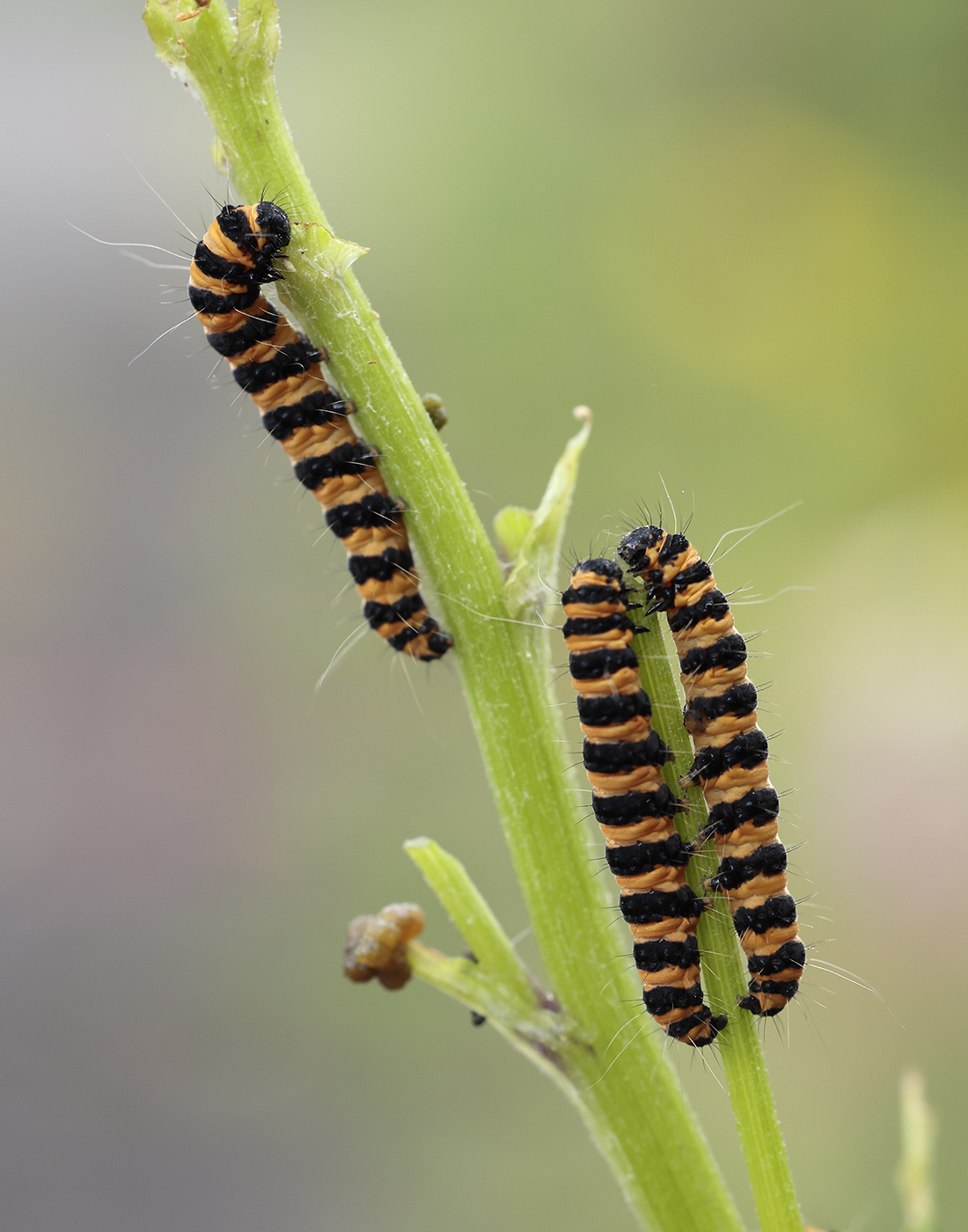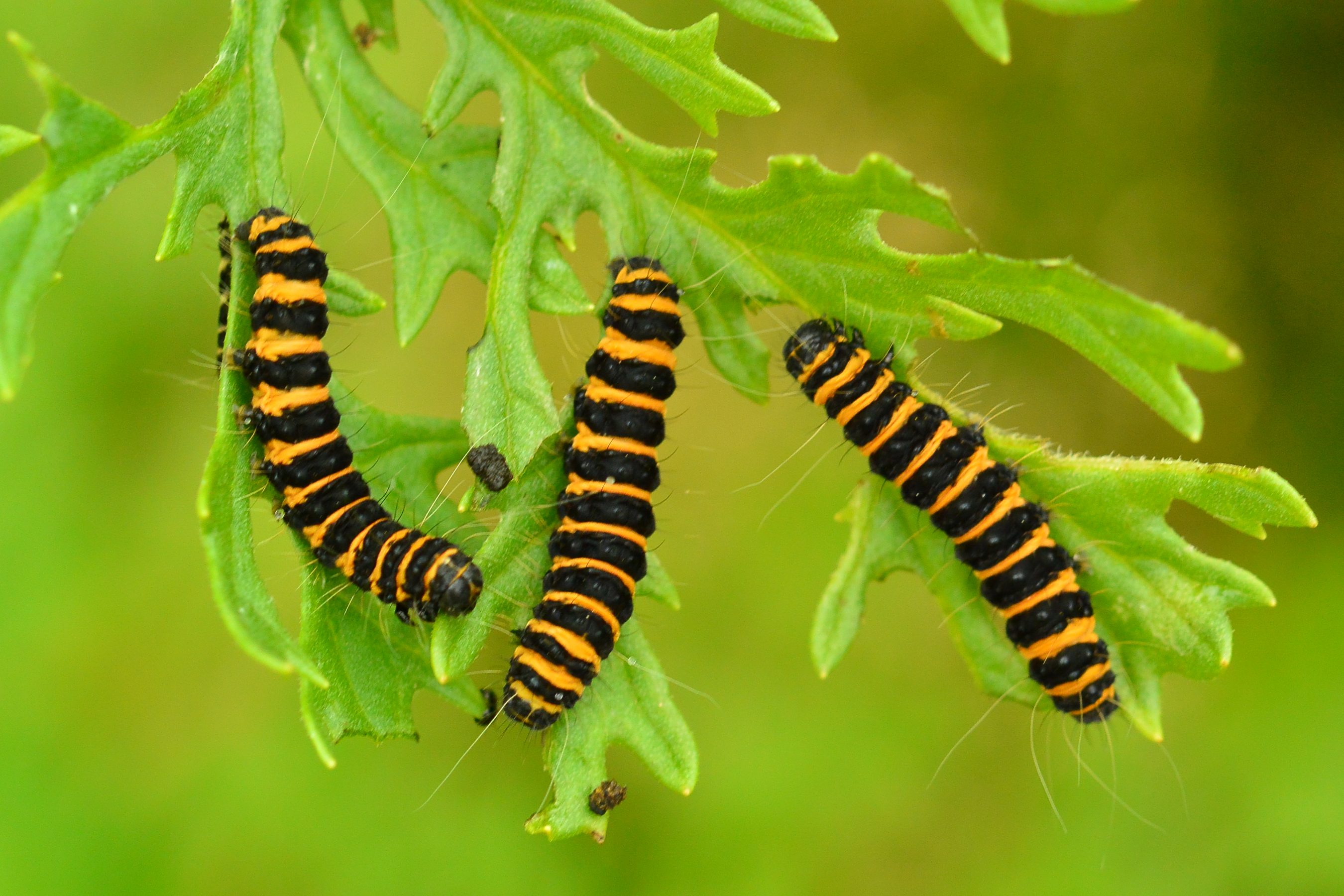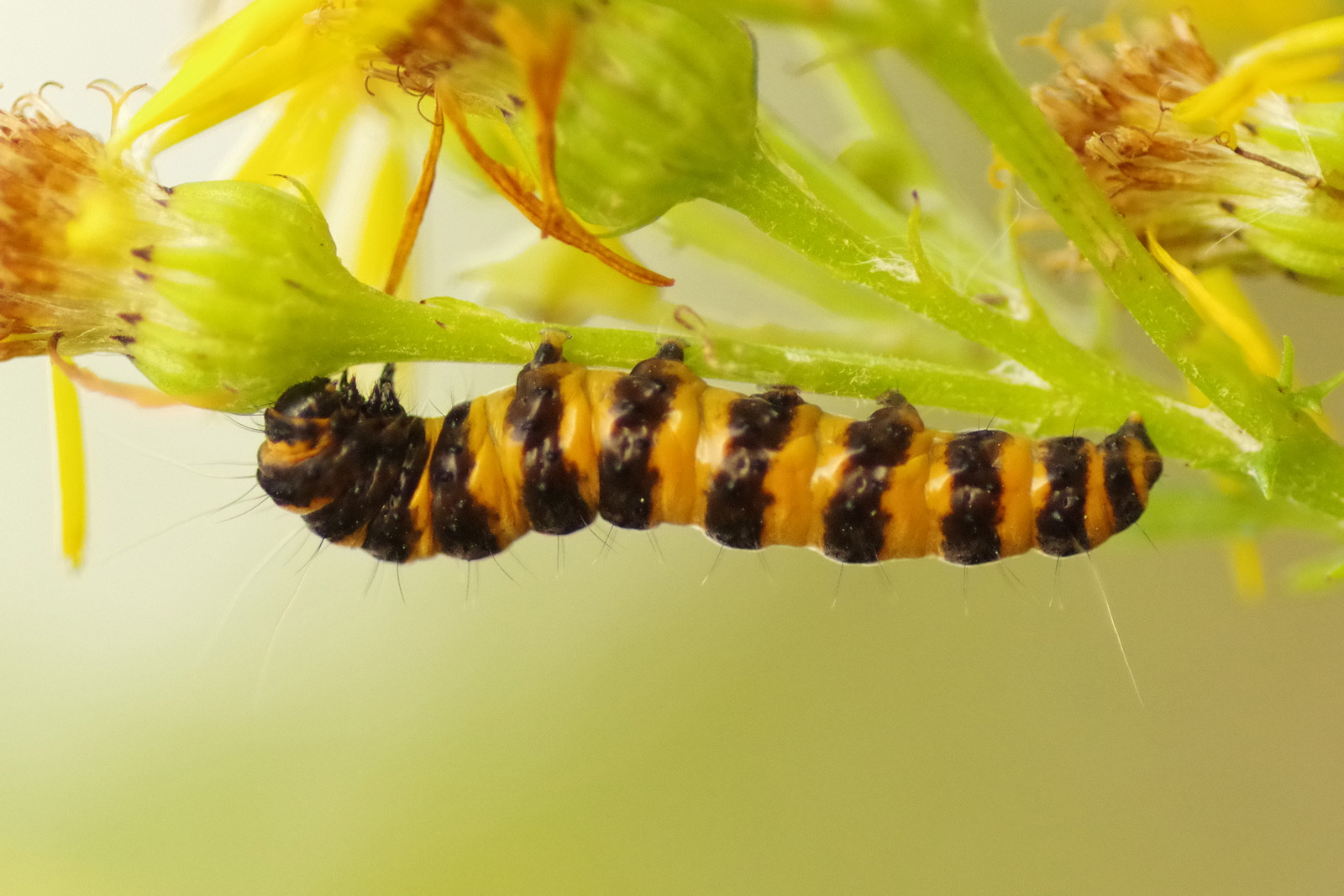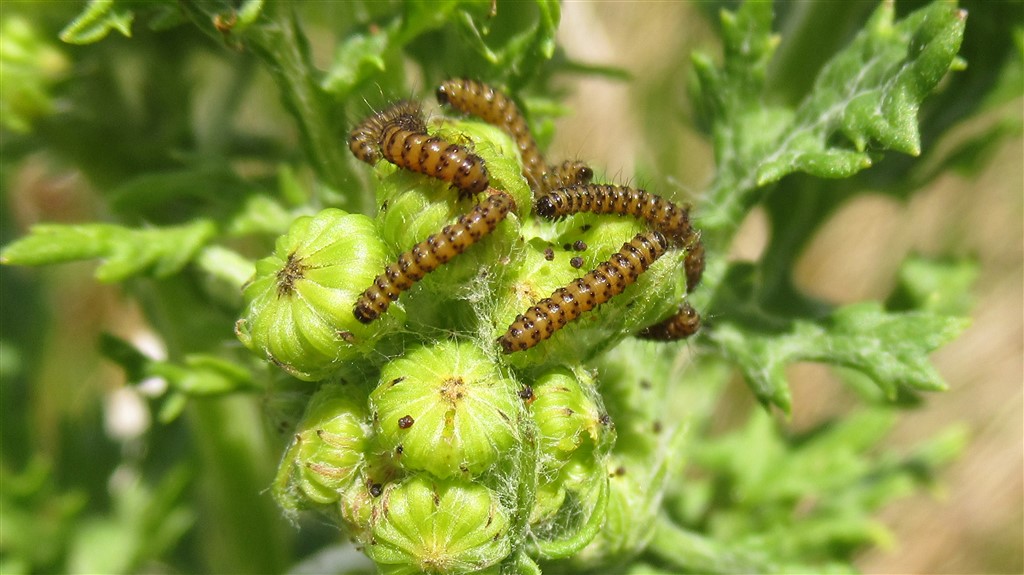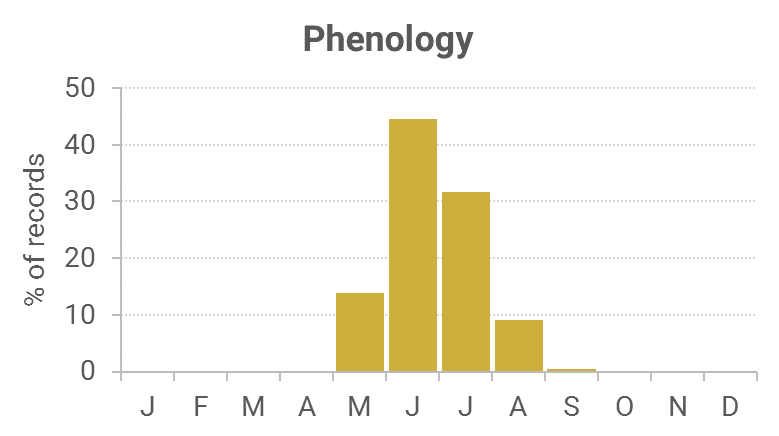Identification
Unmistakable.
Life cycle
Overwinters in a flimsy cocoon just below the surface as a pupa. The larvae occur during July and August, being black and yellow striped and are to be found on Common Ragwort in abundance.
Larval foodplants
Common Ragwort, other ragworts and groundsel.
Habitat
Grazed grassland, especially on the coast.
History 1860-2010
Gordon (1913) found this a rare moth having only taken five around the Corsemalzie area, Wigtownshire.
Cunningham (1947) in the ‘Transactions’ stated it was not uncommon during 1945-47 at Southerness (VC73). During the 1970s it even managed to come to the Rothamsted station at Bridge of Dee on five occasions.
Since the 1980s onwards with progressively more recorders, this day-flying moth which also comes to light, has been found to be widespread across the region.
The adult Cinnabar is poisonous to birds; this actually comes via the caterpillar feeding on Common Ragwort. This plant is also poisonous to horses and landowners are obliged by law to remove this plant where horses are liable to graze.

